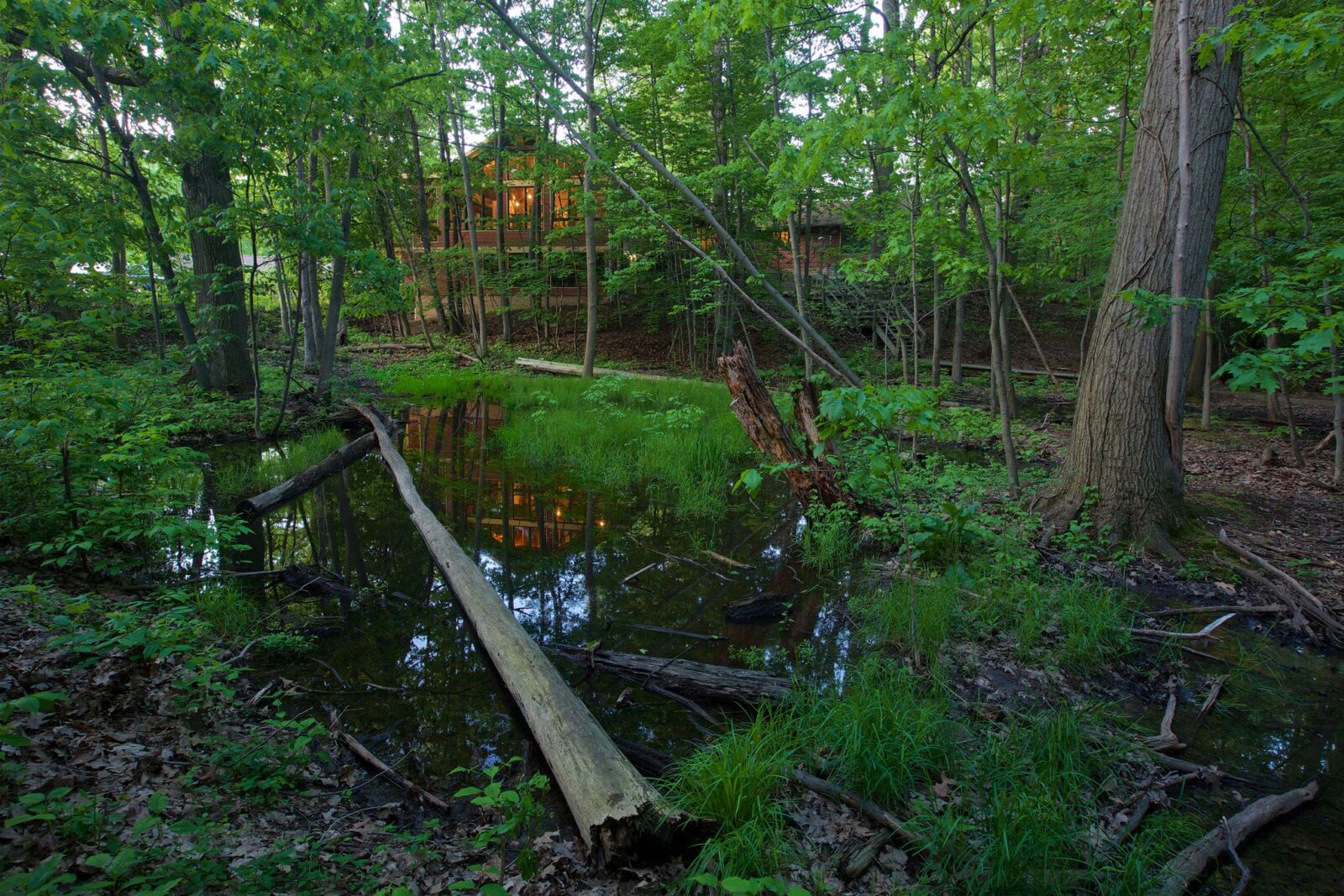Marshes
There are two marsh habitats at the Nature Center. The Big (north) Marsh is located at the confluence of the north and south branches of the Doan Brook. The Big Marsh is approximately 5 acres. Its presence is influenced by an earthen dam, later replaced by a steel sheetplate weir located at the north end of the marsh. It has been speculated that this weir has allowed sediments to fill in the area at the confluence of the two branches of the Brook where the habitat may have naturally been floodplain forest. Sediment from the Brook continues to change the character of the “Lily Pond,” the area of open water between the marsh and the weir. The dominant native species is rice cutgrass with a large number of swamp rose mallow throughout. The Big Marsh typically is wet throughout the spring and fall, but will dry up on the surface during the late summer.
The Mini (south) Marsh is approximately 1 acre of naturally occurring marsh and located along the Stearns Trail just south and east of First Bridge, and is a fairly diverse wetland habitat. It is also dominated by rice cutgrass and has lizzardtail, buttonbush, and marsh rose mallow equally represented. The Mini Marsh typically has standing water most of the year and is only relatively dry during the month of August.
Floodplain Forest
The floodplain forest is the low-lying area adjacent to the stream channel of the Doan Brook and comprises approximately 10 acres of the property. The characteristics of the floodplain are different for the two branches of the Brook. The North Branch of the Brook is along the All People’s Trail and is a predominantly shrubby habitat with silver maples (Acer saccharinum), green ash (Fraxinus pennsylvanica) and crack willow (Salix fragilis) dominating the canopy. The South Branch of the Brook is along the Stearns Trail and this floodplain is more of an open forest with few shrubs. Red oaks (Quercus rubra) and shagbark hickories (Carya ovata) are prevalent in this area. Both habitats flood during extreme weather, but typically remain dry.
Upland Forest
The hillsides and perimeter forest of the Nature Center can be described as upland forest. The dominant tree species is American beech (Fagus grandifolia), a species that tolerates drier soil conditions. Red oak is also present. The Rusty Knight Wildflower Garden is included in the upland forest because the majority of the herbaceous species planted in that space are native woodland species that need little care. The perimeter forest includes all of the wooded area on the hillside and hilltop that ring the Nature Center property and the forested area adjacent to the parking lot. It occupies approximately 5 acres.
Vernal Pool
The vernal pool is located southeast of the parking lot and east of the Stearns Trail. The area is naturally wet and supports wetland species such as skunk cabbage and a variety of sedges and ferns. Vernal pools are small seasonal ponds by definition. They contain water from rain and snow and dry out completely in the summer. Our vernal pool has a variety of macroinvertibrates typical of vernal pools in Northeast Ohio including fairy shrimp. This space has potential to become a breeding area for amphibians.
Stream Corridor
The Doan Brook itself is the stream corridor. This dynamic urban stream changes its course on a regular basis because of flooding and sedimentation. 4 species of fish have been documented living in the water. The stream corridor includes the gravel beds found within the banks and the mucky sediments along its sides. A wide variety of macroinvertibrates can be found in the stream and stream bank deposits.






